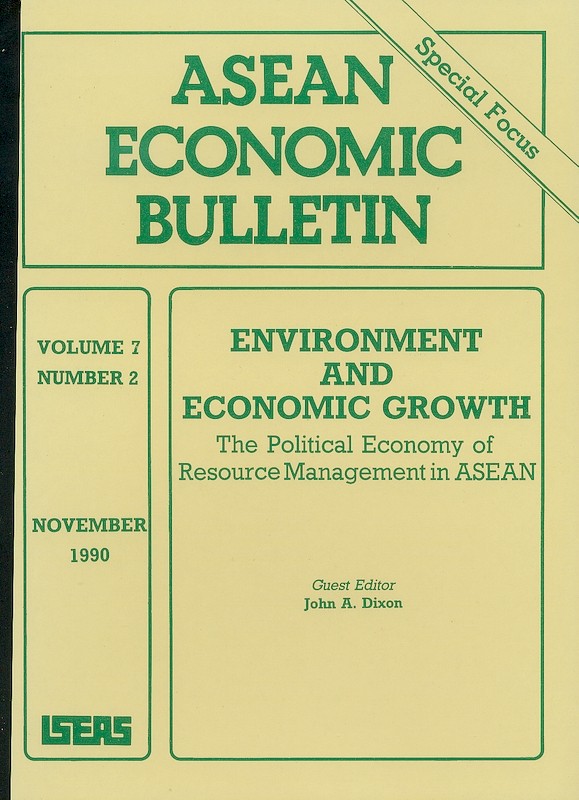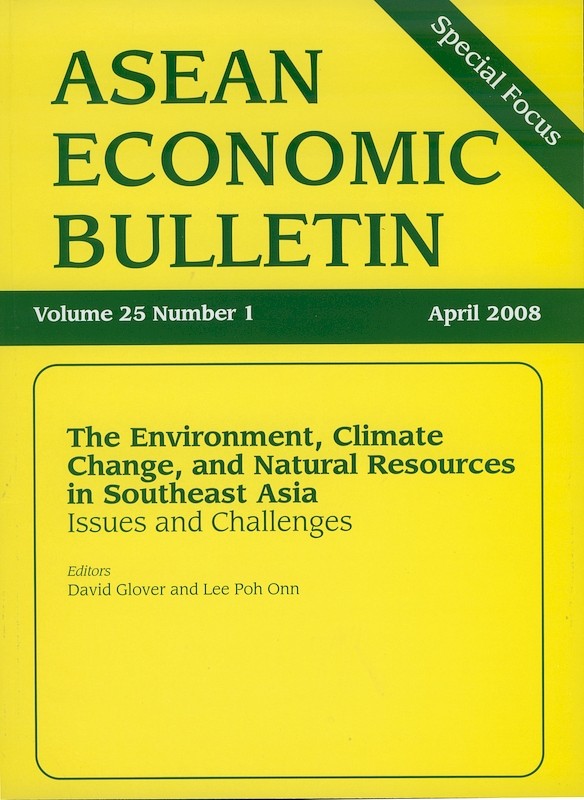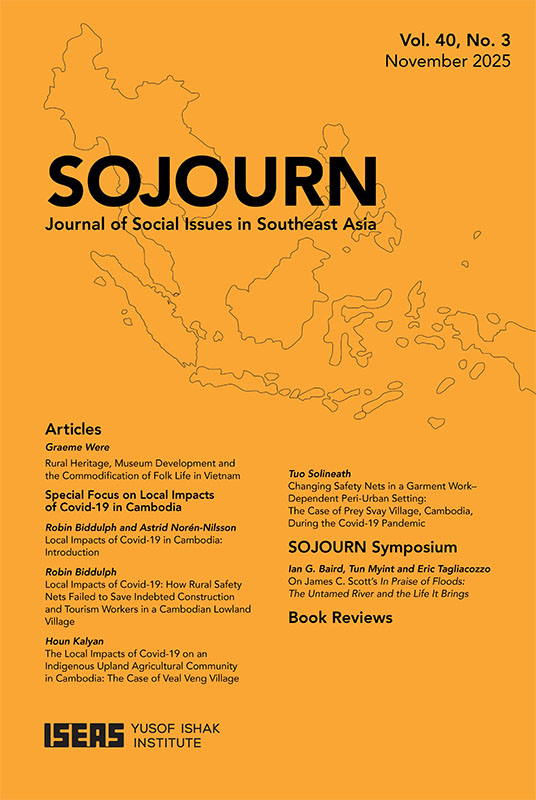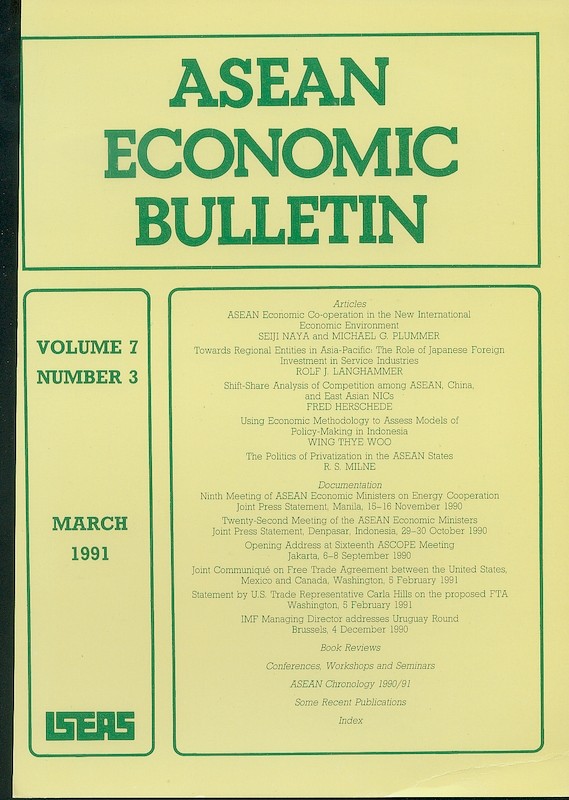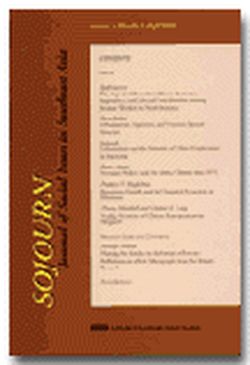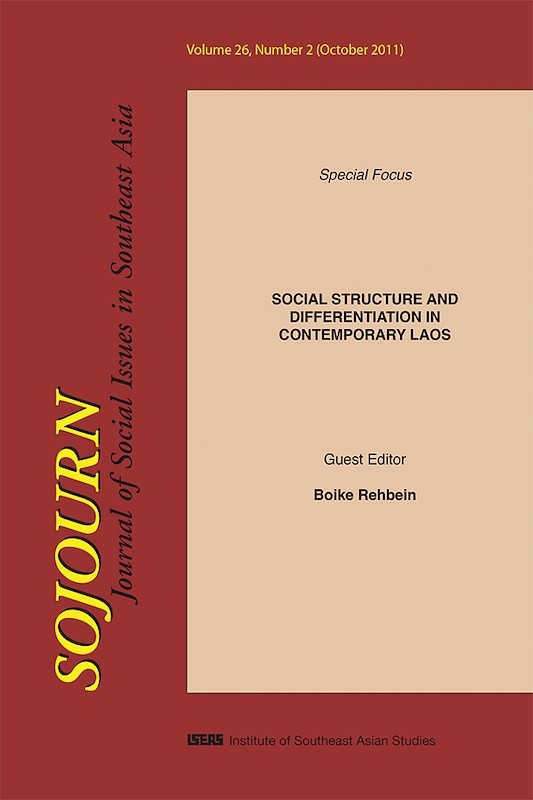-
- ARTICLES
-
Environment and Economic Growth: The Political Economy of Resource Management in ASEAN, by John A. Dixon, author
see abstract
In this overview, the author briefly summarizes the natural resource endowments and environment of the countries of ASEAN (Association of Southeast Asian Nations), and emphasizes the need for proper economic and social management of these resources because the environment will be an increasingly important element in determining the sense of well-being of the region's population. A major challenge is to identify potential conflicts in policies, and evaluate alternative policies, keeping in mind the magnitudes of benefits and costs of the alternatives and the trade-offs that are involved in each.
-
Renewable Resources, the Environment, and Sustained Growth: The Next Twenty-Five Years, by John A. Dixon, author
see abstract
The ASEAN economies have experienced remarkable economic growth and transformation over the past several decades. Even with these changes, however, the renewable resource base remains an important source of employment and producer of goods and services for domestic consumption and exports. These same resources are being placed under various degrees of stress, however, and this article examines two different patterns of development dualistic and convergent paths that describe how economic growth, resource utilization and environmental changes interact. Indonesia and the Philippines exhibit patterns of dualistic development while Thailand and Malaysia are following a convergent path. Individual renewable resource sectors (fisheries, coastal resources, forest resources, agricultural land and water) are examined, and future resource use patterns and likely developments are assessed.
-
ASEAN Nonrenewable Mineral and Energy Resources: Present Status and Future Development, by Allen L Clark, author
see abstract
The mineral sector (oil, gas, metals, coal) of members of the Association of Southeast Asian Nations (ASEAN) represents an essential element in the economic development of both the resource-rich and resource-poor nations. The long-term assessment shows a trend of increasing mineral imports and decreasing mineral exports. Similarly, the level of imports of semi-processed and processed mineral commodities has increased even more rapidly. ASEAN nations, therefore, must adopt economic development policies that recognize a greater international dependence an foreign minerals and a negative balance of trade, vis-a-vis mineral exports and imports. More environmental problems will accompany minerals development. Land degradation, surface and sub-surface water pollution, air pollution, and coastal zone/offshore pollution will be major problem areas arising from development of the minerals sector. Most important, however, will be human health hazards which are already emerging, and are frequently associated with mineral development activities.
-
In the Asian region, there is a complex of issues related to increasing soil loss, rainfall runoff, land degradation, irregular stream flows and poverty that can best be understood within the framework of watersheds. This article develops the rationale for a watershed management approach by discussing the nature and significance of some of the interconnections between upland and lowland areas. Focusing on the promotion of environmentally sound on-site development, the article examines constraints and opportunities for expanding output while reducing erosion, and concludes by proposing specific action and approaches, centered on small farm development and common property management, that development agencies should pursue in their operations.
-
This article evaluates increasing population pressure on forest lands, and analyses the requirements for promoting more conservation-oriented upland farming practices in the Philippines. Using census data with appropriate environmental re-classifications, it was found that about a third of the country's population resided in the uplands and that major migration flows led to upland destinations. While both commercial logging and upland farming contribute to deforestation, commercial forests are already almost exhausted. Thus, in the future, promoting environmentally responsible upland farming will be a major challenge for resource administrators. Since the primary environmental effects of farming steep slopes are related to soil erosion, incentives to make upland farmers themselves adopt soil conservation practices are needed. Providing land tenure, together with subsidies for conservation practices, are practical responses to the challenge.
-
In this article, the coastal resources of Peninsular Malaysia, and the problems and issues relating to coastal management are discussed briefly first. The existing pattern and the type of coastal tourism development are then outlined. Some of the positive and negative effects of coastal tourism, and in particular, the environmental problems, are discussed with reference to the main coastal tourism areas at Port Dickson, Penang, Pulau Pangkor, Pulau Langkawi and the East Coast (several locations including some offshore islands). The integration of tourism development in coastal zone management is also considered.
-
DOCUMENTATION: Joint Press Release of the 4th ASEAN Ministerial Meeting on the Environment, Subang, Malaysia, 18-19 June 1990
-
DOCUMENTATION: Ministerial Declaration of Environmentally Sound and Sustainable Development in Asia and the Pacific. Bangkok, 16 October 1990
-
DOCUMENTATION: Excerpts from the Joint Communique of the ASEAN Inter-Parliamentary Organization, 11th Working Committee and General Assembly, Singapore, 10-15 September 1990
-
DOCUMENTATION: Summary Record of the Roundtable on the Changing Global Environment and its Implications for India, ASEAN and the Asia-Pacific, New Delhi, 23-24 July 1990
-
BOOK REVIEW: Transnational Corporations and Environmental Management in Selected Asian and Pacific Developing Countries. ESCAP/UNCTC, by Nassau A Adams, author
-
BOOK REVIEW: Philippines: Environment and Natural Resource Management Study. World Bank Country Study., by Alan Burnett, author
-
BOOK REVIEW: Economic, Natural-Resource Scarcity and Development: Conventional and Alternative Views, by Edward B Barbier, by Zaw Min Naing, author
-
BOOK REVIEW: Structural Adjustment in the World Economy and East-West-South Economic Cooperation, edited by Karl Wohlmuth, by Peter N Nemetz, author
-
BOOK REVIEW: Meeting The East Asia Challenge: Trends, Prospects and Policies,, by Alan Bollard, Sir Frank Holmes, David Kersey and Mary Anne Thompson; Stepping Stones to Freer Trade? Canadian, Australia and New Zealand Perspectives, edited by Sir Frank Holmes, by Robert L Curry, Jr., author
-
Conferences, Workshops, and Seminars
-
-
